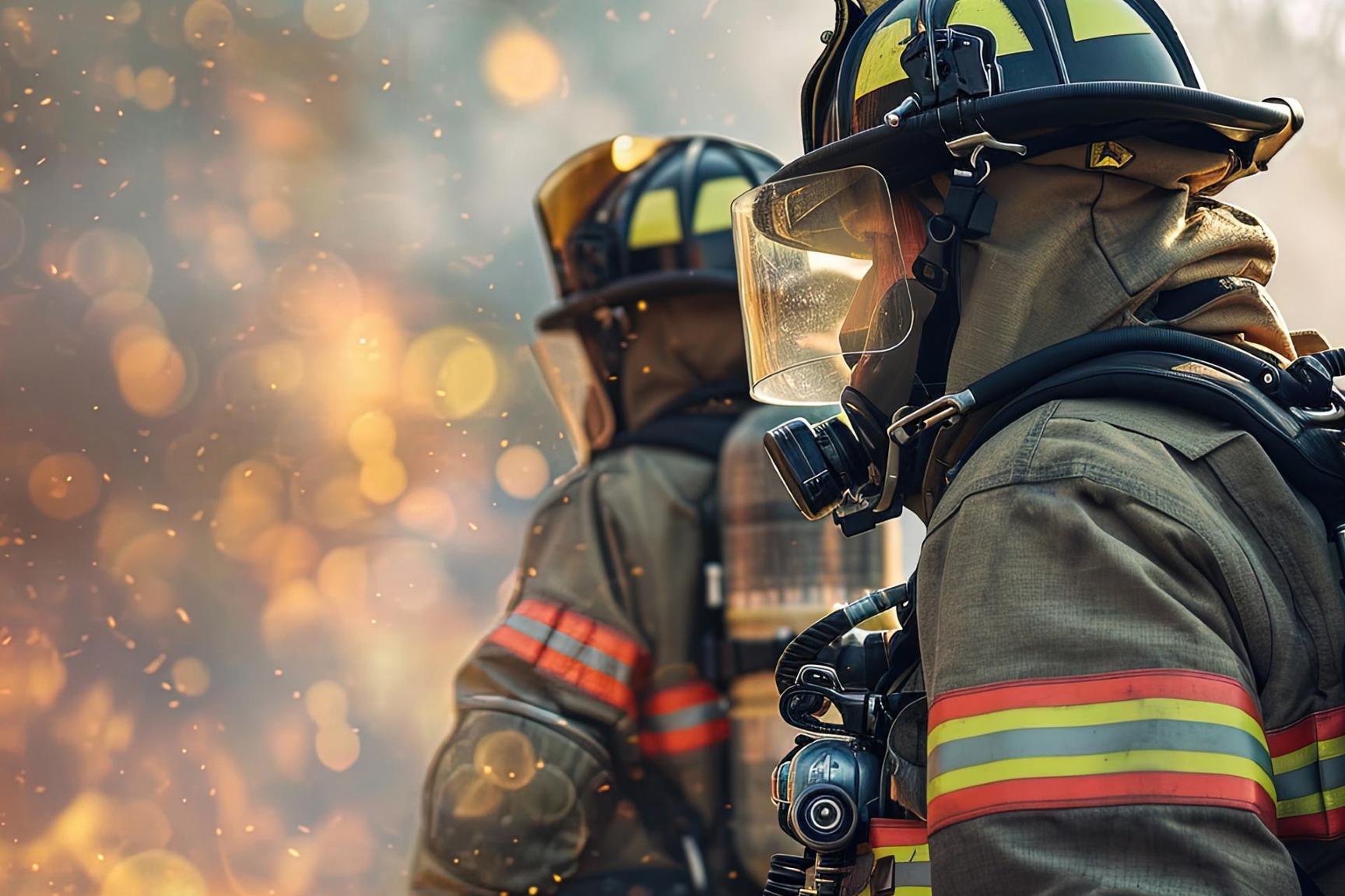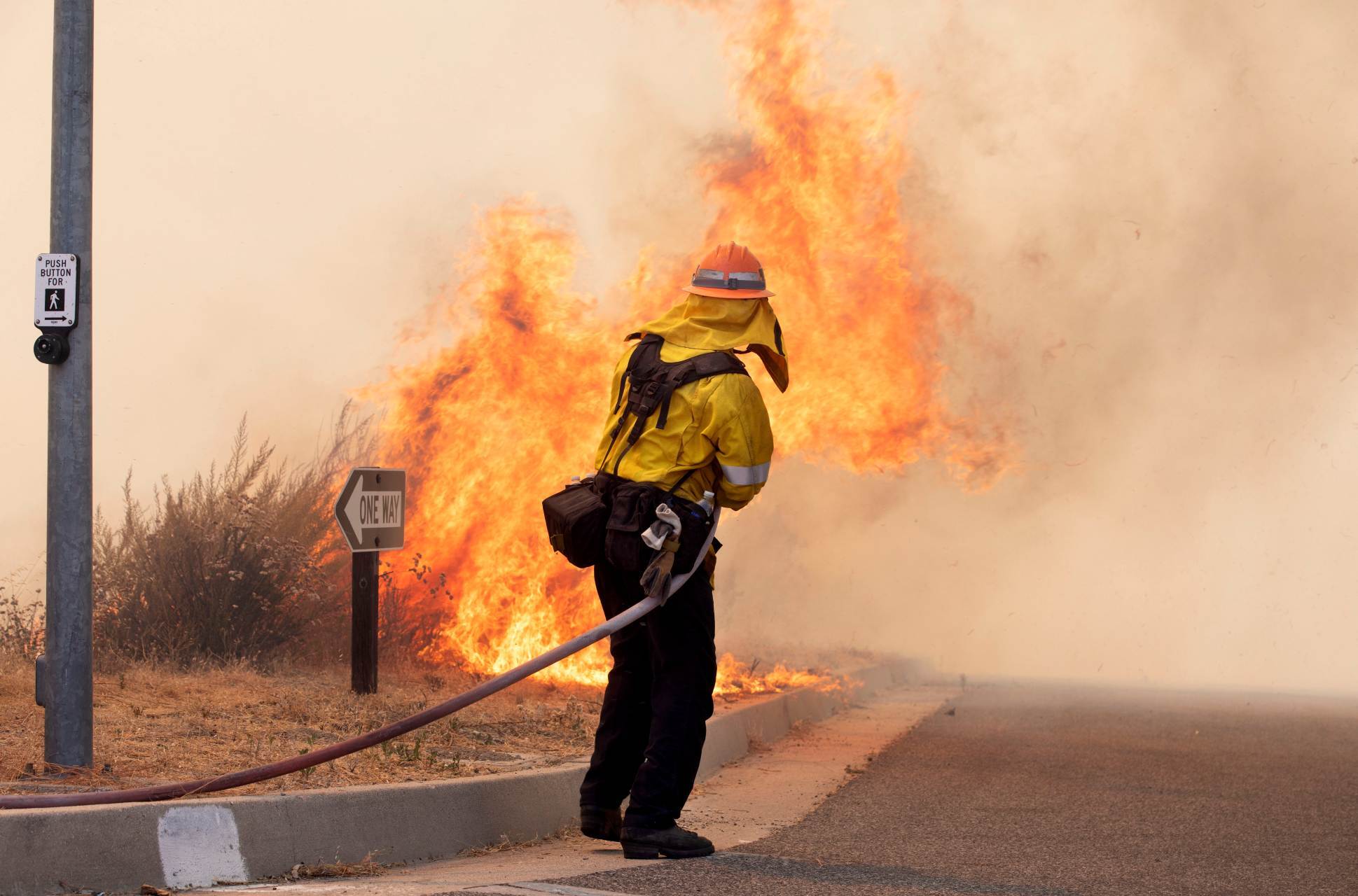Courage, Camaraderie, and Commitment: What It Means to Be a Firefighter
Posted by Galls.com on Aug 13th 2025

Firefighting is more than a profession, it’s a calling rooted in courage, dedication, and service. Firefighters run toward the chaos when others are running away. They fight fires, respond to car crashes, administer life-saving medical care, and show up for their community in ways most people will never fully see. But behind the sirens and smoke is a team of dedicated professionals whose day-to-day life involves a whole lot more than just putting out fires.
Here’s a closer look at what it really means to wear the badge, live the shift life, and stand ready for whatever comes next.
The Broad Scope of Firefighting

Firefighters are often perceived purely as fire suppressors, but their job involves a wide range of emergencies. Modern firefighting demands expertise across various scenarios, including:
- Fire suppression (structure, wildland, and vehicle fires)
- Emergency medical care (many firefighters are EMT-certified)
- Rescue operations (vehicle extrications, water rescues, and high-angle rescues)
- Hazardous materials incidents
- Natural disaster response
Beyond emergency calls, firefighters are instrumental in community preparedness. They conduct fire safety inspections, lead education programs, train regularly, and maintain their team’s essential firefighter tools and equipment for readiness. Their contribution goes beyond the fireground, making them essential to public safety every day.
Life at the Firehouse
A typical shift for a firefighter lasts 24 hours, and it usually starts early many arrive 30 minutes ahead of time to check their gear and get briefed. The day might include a few emergency calls, equipment inspections, station chores, and physical training. But it’s not all go-go-go.
When things are quiet at the firehouse, firefighters gather for meals and catch some rest in their individual bunkrooms. Around the kitchen table, men and women swap stories, crack jokes, and reflect on past calls—not just for laughs, but to learn and grow. The kitchen table is more than just a place to eat; it’s where conversations deepen, experiences are shared, and valuable lessons are passed on.
Ask most firefighters, and they’ll tell you: the firehouse isn’t just a workplace, it’s a second home. It’s where bonds are built, trust is earned, and camaraderie is forged through shared meals, tough calls, and quiet moments in between.
How to Become a Firefighter
The path to becoming a firefighter looks different for everyone, but there are a few things that hold true across the board. First, you need:
- A high school diploma or equivalent
- U.S. citizenship and a clean background
- Strong physical health and mental resilience
Most firefighters start by volunteering or working part-time while completing training. That typically includes EMT certification, fire academy courses, and eventually, passing the Candidate Physical Ability Test (CPAT).
It’s a competitive field. What helps candidates stand out? Showing a commitment volunteering, earning Firefighter I and II certifications, staying fit, ability to take constructive criticism, and learning as much as possible.
Training Essentials
Most aspiring firefighters start with part-time or volunteer roles while pursuing additional training. Typical steps include:
- Completing emergency medical technician (EMT) certification
- Attending fire academies for formal firefighting education
- Passing the Candidate Physical Ability Test (CPAT), which simulates real-world firefighting tasks
Standing out as a candidate often involves consistent effort. Gaining certifications such as Firefighter I and II, maintaining fitness, and showing a commitment to service.
The Physical Demands of Firefighting
The job’s physical challenges cannot be overstated. Firefighters often carry heavy equipment, climb ladders, and pull victims to safety, pushing their bodies to the limit in high-stress situations. You’ve seen firefighters carry people out of buildings, drag hoses across yards, and climb ladders into blazing attics. None of that is easy. Firefighting is physically demanding, plain and simple. That’s why fitness is a daily priority at most departments. The CPAT simulates real scenarios carrying gear upstairs, dragging a dummy, hoisting tools and you have to pass it just to get your foot in the door.
Maintaining Peak Fitness
Once you're hired, the training doesn’t stop. Firefighters keep themselves in shape with job-specific workouts that focus on strength, agility, and endurance because when the alarm sounds, your body needs to be ready.
- Physical training is a daily priority to ensure readiness for emergencies.
- Training regimens typically focus on strength, agility, and endurance.
- Passing the CPAT requires performing tasks such as dragging a dummy or hoisting tools, all under time constraints, replicating real-life scenarios.
By staying physically fit, firefighters ensure they can perform their duties without compromising safety, for themselves or the people depending on them.
Emotional Strength in the Face of Adversity
Firefighting doesn’t just test the body; it challenges the mind and spirit as well. Responding to distressing incidents, like fatal fires or severe accidents, can take a toll.
To address these challenges, many fire departments provide mental health resources and stress the importance of peer support within the team. The bonds built through shared experiences help firefighters maintain their resilience over time.
Why Firefighters Answer the Call
Despite the physical and emotional demands, firefighters cite numerous reasons for their unwavering commitment to the job, including:
- Job security: Firefighting is a vital service, ensuring ongoing demand for the role.
- Competitive pay: Many departments offer overtime, hazard pay, and union-negotiated benefits.
- Flexible schedules: Typically, 24-hour shifts are followed by extended periods of rest time.
- Purpose and pride: The opportunity to make a tangible difference in people’s lives serves as the ultimate reward.
Career Advancement within the Fire Service
A firefighter’s career doesn’t stop at the fireground. With experience and additional training, there are numerous opportunities for growth and specialization, including roles such as:
- Engineers: Responsible for apparatus operation and maintenance.
- Company officers (Lieutenants and Captains): Leadership positions coordinating teams and operations.
- Specialists: Wildland firefighters, hazardous materials technicians, or rescue operators.
- Fire prevention experts: Inspectors, investigators, or training instructors.
Firefighters pursuing leadership roles often engage in advanced certifications and higher education, such as fire science and public administration degrees.
Tools of the Trade
Firefighters rely on protective fire and rescue uniforms and gear just as much as their training. That includes:
Turnout Gear (Bunker Gear) – Built with multiple layers to protect against extreme heat and flames, our turnout gear delivers the mobility and durability firefighters need on the job. Galls carries trusted brands designed to meet NFPA standards and keep you ready for action.
Lion Men’s V Force Turnout Coat With Flex 7 Outer Shell
Lion Men’s V Force Flex 7 Turnout Pants
Fire Helmets – Designed to take the heat—literally. Galls offers impact- and heat-resistant helmets from leading names like Lion and Bullard, with features like integrated face shields for added protection on every call.
Bullard UST Traditional Style Structural Fire Helmet
Boots & Gloves – Engineered for the toughest conditions, these essentials are made to withstand high temps, sharp debris, and slick surfaces. Whether you're in the station or on the fire line, Galls has durable options from top brands like Lion, Haix, and Black Diamond.
Lion Defender NFPA Gauntleet Firefighting Gloves
Black Diamond X2 Leather Fire Boot
Hoods & SCBA Gear – Full respiratory protection starts with the right hood and breathing apparatus. Galls stocks NFPA-compliant fire hoods and SCBA accessories built for visibility, comfort, and safety in the most hazardous environments.
Lion Redzone NFPA Certified Particulate Blocking Fire Hood
At Galls, we offer the top-rated firefighter gear trusted by departments nationwide. From PPE to tools to uniforms, everything we stock is made to perform under pressure—just like you.
The Future of Firefighting
Technology continues to transform firefighting, introducing tools that enhance safety, effectiveness, and decision-making. Emerging advances include:
- Smart wearables: Devices monitor firefighter vitals in real time.
- Drones: Provide aerial perspectives during operations.
- Next-gen reporting systems: Enable streamlined emergency reporting and tracking.
- Smart building integration: Systems assist responders by providing critical structural details during incidents.
These innovations complement the enduring mission of the fire service—protecting people and property while prioritizing the safety of responders.
At Galls, we stand behind those who serve. Whether you’re new to the firehouse or you’ve been walking through smoke for decades, we’re here with the gear that helps you do your job safely, efficiently, and with pride.
Explore trusted firefighter gear at Galls. Built to perform, trusted to protect.

